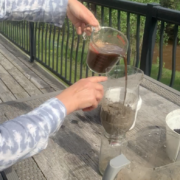Experiment – Wetlands as a Filter
Did you know that one of the great benefits of wetlands is their ability to filter run-off before it enters open water? Sediments and pollutants (including manure and chemicals) that pass through a wetlands before entering open water are filtered out. In wetlands, water flow slows and sediments drop to the bottom. Many chemicals and pollutants collect in wetlands and are broken down by wetland microorganisms or taken up through wetlands plant roots.
Find out for yourself by filtering water through 3 natural filters, including pond soil & plants.
Materials
- 3 two litre bottles or milk cartons (remove screw cap). These will be your “filter housing.”
- 4 glass jars
- 3 cups of sand
- 3 cups of garden soil
- 3 cups of wetlands soil with plants/moss attached
- measuring cups
- tape
- large pitcher & stir stick
- dirty water (add 5 tsp coffee grounds, 5 tsp dirt, 5 tsp cocoa powder, 5 drops of food colouring to 8 cups water in a large pitcher and stir well)
- scissors
- notebook and pencil
Procedure
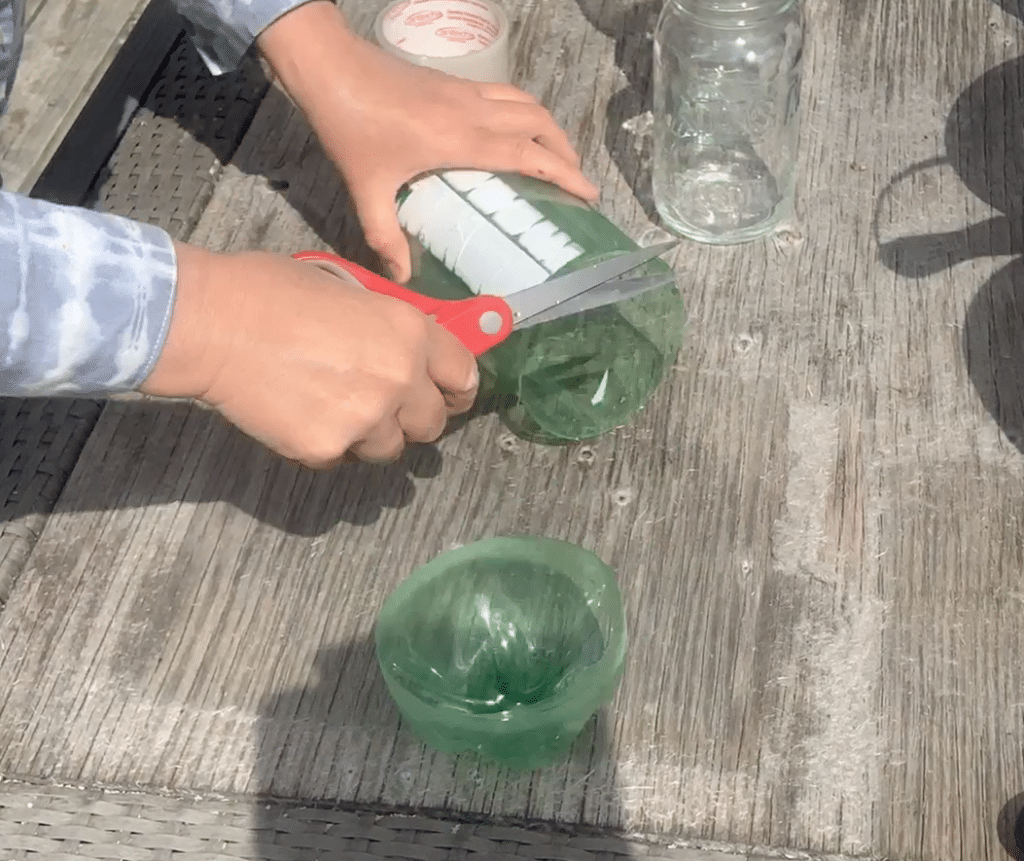
1. Make sure you get help to cut the three bottoms off the bottles or cartons to make funnels. Discard/recycle the bottom of each bottle.
To prevent filter material from passing through the bottle into the jar, you can wrap cheesecloth or a piece of old window screen around the bottle’s screw top with an elastic band before you go to STEP 2. Note – this will slow the experiment down.
2. Position each bottle upside down in the mouth of a jar. Secure each bottle to its jar with tape. See diagram. Label them B, C, D.
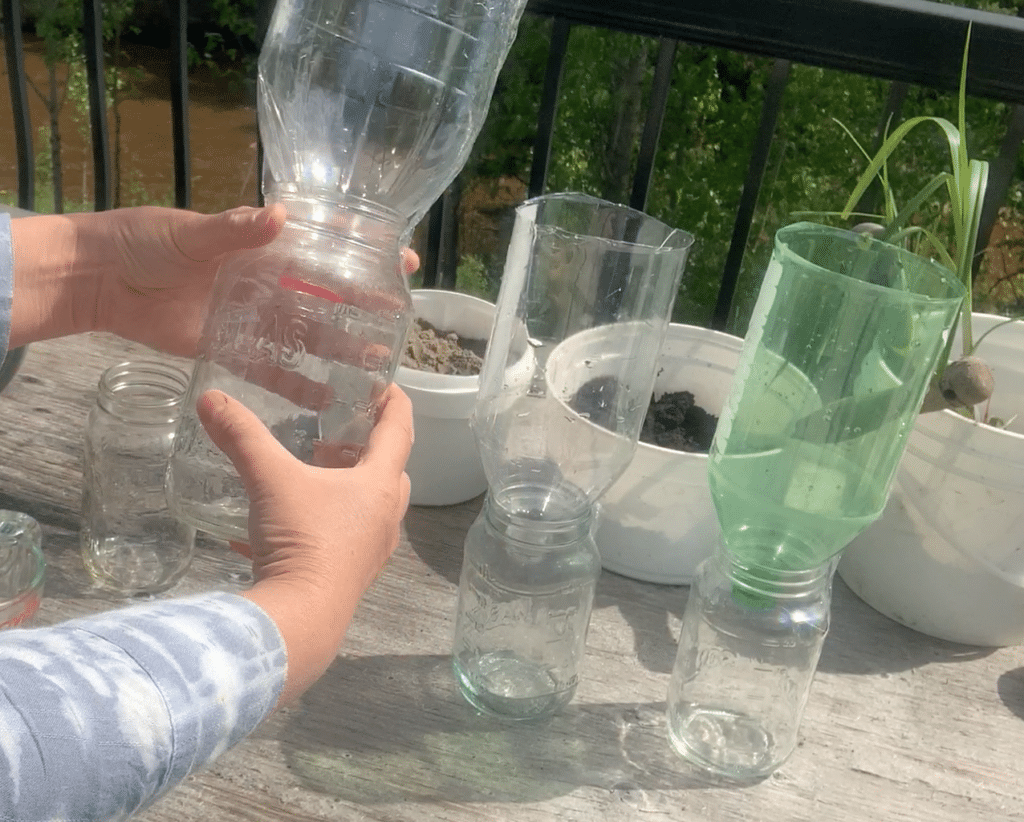
3. Mix up your 8 cups of dirty water in a large pitcher.
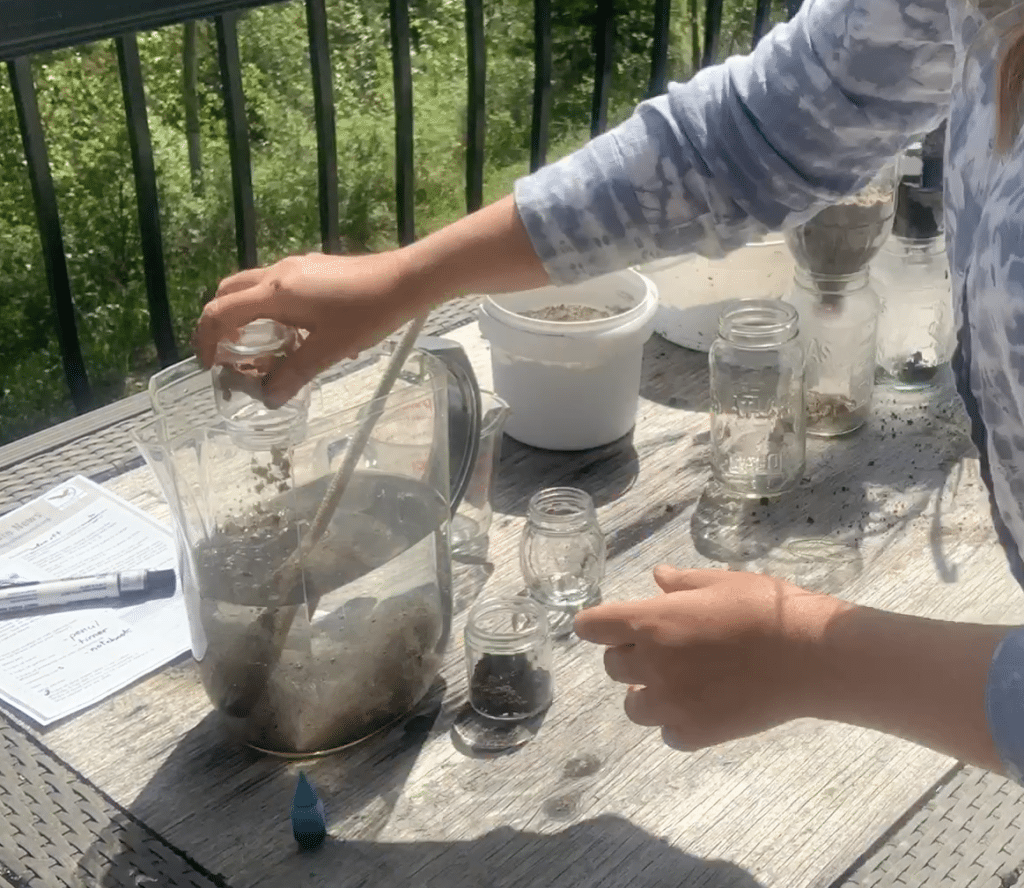
4. Pour 2 cups of dirty water into a glass jar (this is your control). Label this jar A.
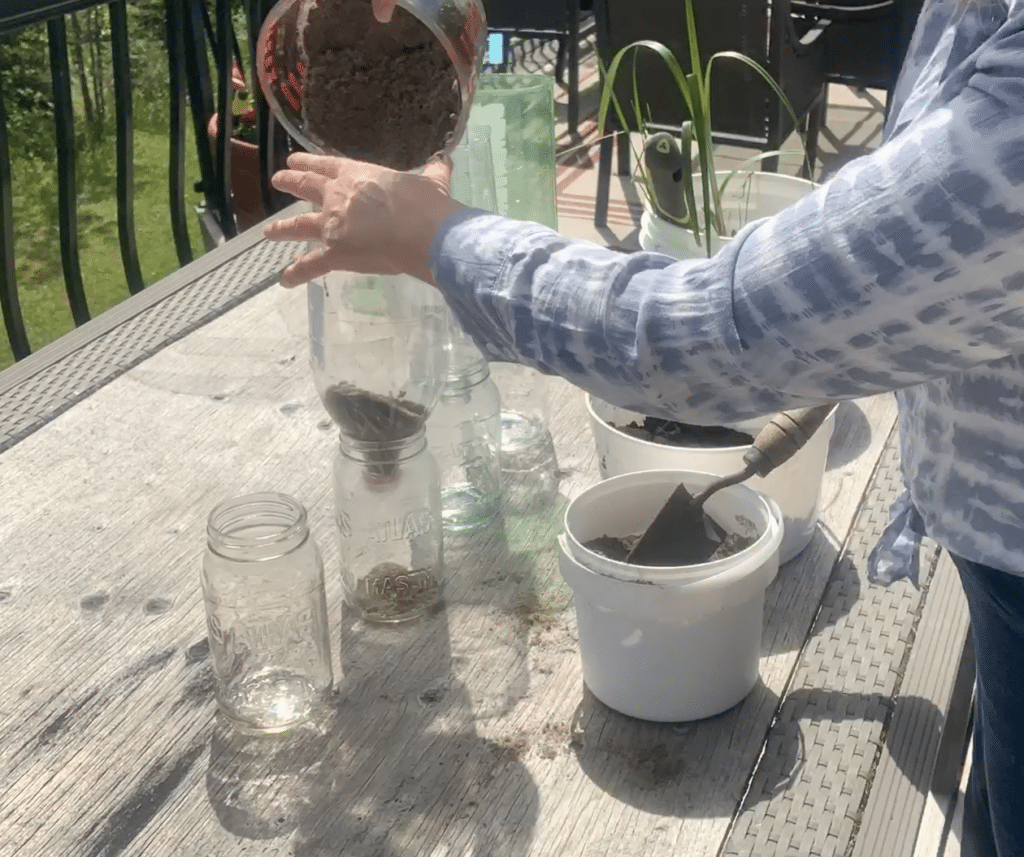
5. Fill filter #B with sand, fill filter #C with garden soil and fill filter #D with pond soil/plants.
6. Slowly pour 2 cups of dirty water through each “filter.” Try to pour at the same speed for each filter. If you have helpers, each of you can pour into a filter at the same time and same speed.
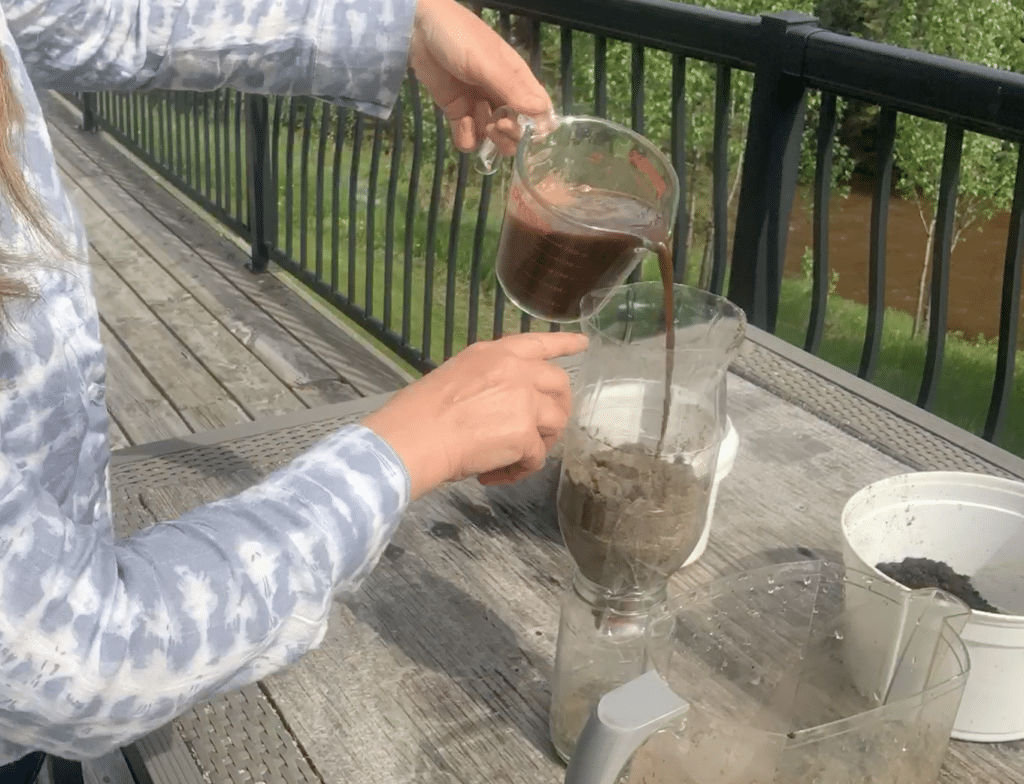
7. Monitor the speed that the water passes through each filter by keeping notes of the time you start pouring and the time the filter stops dripping.
8. Check the colour of the filtered water during the dripping and then after letting it settle out for an hour or two.
9. Notice how much of the filter material is passing through your filter.
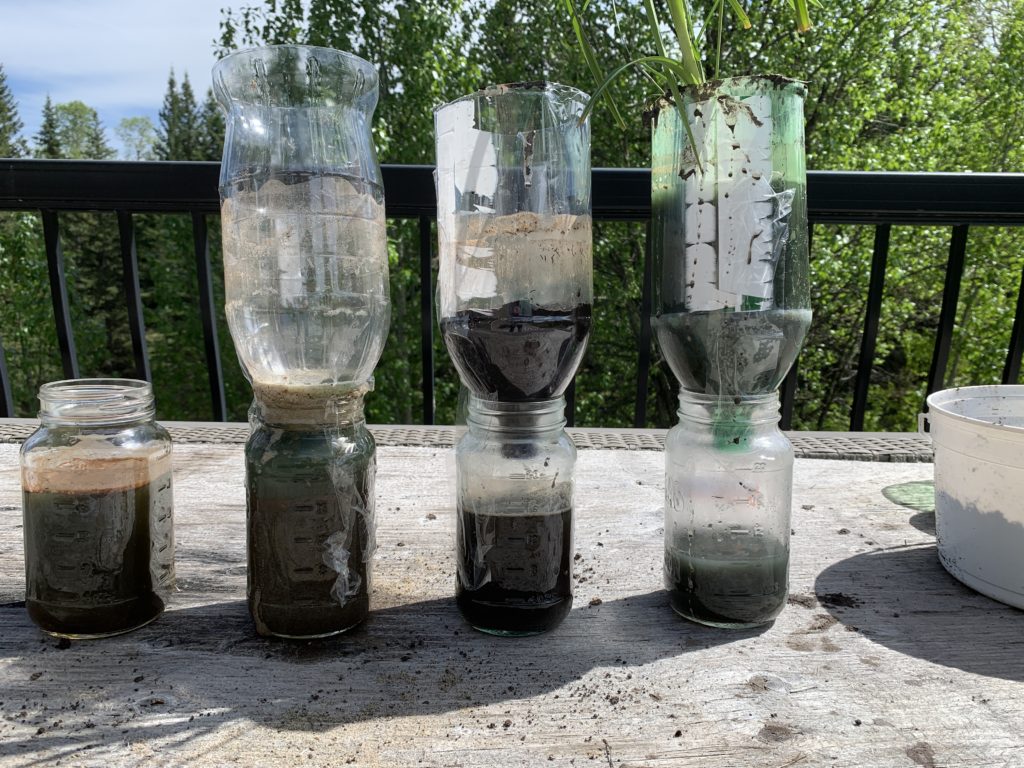
Questions
- Which filter let the water pass through it the fastest?
- Which filter let the water pass through it the slowest?
- Compare the colour of the unfiltered water in jar A with the filtered water in Jar B, C and D? Which filter was able to filter out the most “dirt?” Which filtered water sample is the dirtiest? Which is the cleanest?
- How much of each filter material passed through the funnel into the jar?

